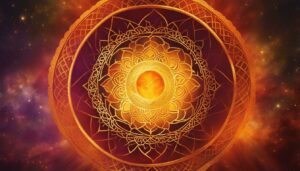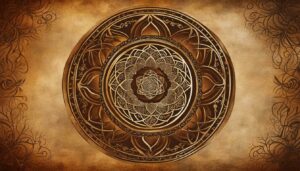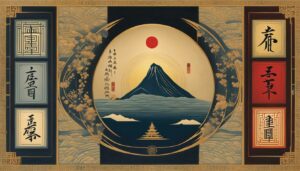Reiki’s historical journey encompasses a rich tapestry of events, spanning from its origins to its present-day practices and the possibilities that lie ahead.
Factual data: Reiki’s historical journey began in 1914 with the creation of Reiki Ryoho by Mataji Kawakami. Before Mikao Usui developed his style of Reiki, there were already four other styles of Reiki healing being practiced in Japan. Usui Sensei had his mystical experience in 1922 and developed his style of Reiki called Usui Reiki Ryoho. Usui Reiki became the predominant form of Reiki practiced worldwide due to the circumstances during and after World War II and the work of Hawaya Takata in the West. However, there have been discrepancies and distortions in the historical accounts of Reiki, with Takata Sensei altering details to make it more appealing to Americans.
The true history of Reiki has been uncovered through research and documentation from various sources, including the inscription on the Usui Memorial. The practice of Reiki has evolved and grown over the years, with the establishment of the International Center for Reiki Training and the development of new branches such as Usui/Tibetan Reiki and Holy Fire Reiki. The future of Reiki continues to expand as individuals evolve and focus on spiritual development and healing.
Key Takeaways:
- Reiki has a fascinating historical journey that dates back to 1914.
- There were already four styles of Reiki healing being practiced in Japan before Mikao Usui developed his own style.
- Usui Reiki became the predominant form of Reiki worldwide due to its role during and after World War II.
- Hawaya Takata played a significant role in introducing Reiki to the West.
- Research and documentation have helped uncover the true history of Reiki, despite discrepancies and distortions.
- The practice of Reiki has evolved and expanded over the years, leading to the development of new branches like Usui/Tibetan Reiki and Holy Fire Reiki.
- The future of Reiki holds exciting possibilities as individuals focus on spiritual development and healing.
The Origins of Reiki: Tracing its Roots in Japan
To understand Reiki’s historical journey, it is essential to trace its roots back to Japan, where various styles of Reiki healing were already in practice prior to Mikao Usui’s significant contribution. Reiki, as we know it today, has its origins in the early 20th century Japan, but the concept of energy healing can be traced much further back in history.
In Japan, Reiki healing was not a new concept when Mikao Usui developed his unique style of Reiki. Before Usui Sensei, there were already four other distinct styles of Reiki healing being practiced. These styles were based on different techniques and teachings, with each having its own lineage and approach to energy healing.
It was in the year 1922 that Mikao Usui had a profound mystical experience on Mount Kurama, which led to the development of Usui Reiki Ryoho. This system of healing focused on the use of symbols, mantras, and a hands-on healing technique known as “laying on of hands.” Usui Reiki Ryoho became the predominant form of Reiki practiced worldwide due to its effectiveness and the efforts of Hawaya Takata in introducing it to the West.
However, it is important to note that the historical accounts of Reiki have not always been accurate. Takata Sensei made alterations to the details of Usui’s teachings and lineage to make it more accessible and appealing to Americans. The true history of Reiki has been uncovered through extensive research and documentation, including the inscription on the Usui Memorial. These findings have shed light on the authentic origins and practices of Reiki healing.
| Reiki Styles Practiced in Japan | Key Characteristics |
|---|---|
| Usui Reiki Ryoho | Developed by Mikao Usui, focuses on the use of symbols and laying on of hands. |
| Hayashi Reiki Ryoho | Founded by Chujiro Hayashi, emphasizes simplicity and the use of symbols for healing. |
| Hayashi Takata Reiki Ryoho | A combination of Hayashi and Takata styles, taught by Hawaya Takata. |
| Hayashi Ushi Reiki Ryoho | Developed by Ushi, focuses on intuition and spiritual development in healing. |
“The true history of Reiki has been uncovered through extensive research and documentation.”
Mikao Usui: The Founder of Usui Reiki Ryoho
Mikao Usui is hailed as the visionary founder of Usui Reiki Ryoho, his spiritual journey and transformative experience serving as the catalyst for the development and evolution of Reiki. Born on August 15, 1865, in Taniai Village, part of Yamagata City in Gifu Prefecture. Usui Sensei embarked on a lifelong pursuit of spiritual enlightenment.
It was in 1922 that Usui Sensei had his mystical experience on Mount Kurama, where he received the gift of healing energy and the knowledge of how to harness it for the benefit of himself and others. This experience led to the development of his unique style of Reiki, which he called Usui Reiki Ryoho.
Usui Reiki Ryoho focuses on the cultivation of one’s spiritual development and healing abilities, offering a holistic approach to wellness. Usui Sensei believed that Reiki could be learned and practiced by anyone, regardless of their background or spiritual beliefs. This inclusive philosophy has contributed to the widespread popularity and accessibility of Reiki today.
Throughout his life, Mikao Usui dedicated himself to teaching and sharing Reiki with others. He established the Usui Reiki Ryoho Gakkai, an organization dedicated to preserving and spreading his teachings. Usui Sensei’s legacy continues to thrive and evolve, inspiring countless individuals to explore the healing potential of Reiki for themselves and others.
The Evolution of Usui Reiki Ryoho
Since its inception, Usui Reiki Ryoho has undergone several developments and adaptations. One significant milestone in the evolution of Reiki was the introduction of Reiki to the Western world by Hawaya Takata. Recognized as a pivotal figure in Reiki’s global expansion, Takata Sensei played a crucial role in popularizing the practice outside of Japan.
However, it is important to note that discrepancies and distortions in the historical accounts of Reiki have emerged over time. Takata Sensei made alterations to the details of Mikao Usui’s life story, perhaps in an effort to make Reiki more appealing to Western audiences. Nonetheless, through diligent research and documentation, the true history of Reiki has been uncovered.
Today, the practice of Reiki has continued to evolve with the establishment of the International Center for Reiki Training and the emergence of new branches such as Usui/Tibetan Reiki and Holy Fire Reiki. These developments have expanded the practice of Reiki, allowing individuals to explore and access different facets of this powerful healing modality.
| Key Points: | – Mikao Usui is the founder of Usui Reiki Ryoho. |
|---|---|
| – Usui Sensei had a transformative experience in 1922, leading to the development of his unique style of Reiki. | |
| – Usui Reiki Ryoho focuses on spiritual development and healing. | |
| – Reiki has evolved and expanded through time, with the establishment of the International Center for Reiki Training and the development of new branches. |
Usui Reiki Ryoho: Spreading Worldwide
Usui Reiki Ryoho, with its profound healing abilities, quickly gained international recognition and popularity, spreading its reach beyond Japan, thanks to the efforts of Hawaya Takata and the post-war global healing movement. The practice of Reiki expanded rapidly as Takata Sensei introduced it to the West, sharing its transformative effects with people around the world.
During and after World War II, there was a growing interest in alternative healing practices, and Reiki found a receptive audience in countries like the United States. Takata Sensei, a Japanese-American woman, played a pivotal role in spreading the teachings of Usui Reiki Ryoho. She became a dedicated student of Chujiro Hayashi, one of Mikao Usui’s direct disciples, and introduced Reiki to the West with her powerful healing demonstrations.
The post-war era saw a surge in interest in holistic healing modalities, and Reiki became an integral part of the global healing movement. Takata Sensei trained numerous Reiki Masters in the West, empowering them to spread the practice further. The simplicity and efficacy of Usui Reiki Ryoho resonated with people seeking natural healing methods, resulting in its widespread acceptance and adoption.
As Reiki gained momentum, it became a recognized healing technique worldwide. Today, Reiki practices throughout history continue to evolve and adapt to the needs of individuals and communities. With the establishment of the International Center for Reiki Training, practitioners have access to comprehensive resources and training, fostering the growth and development of new branches such as Usui/Tibetan Reiki and Holy Fire Reiki. These advancements have expanded the scope and possibilities of Reiki, allowing practitioners to explore diverse techniques and approaches in their healing journeys.
| Key Points | Details |
|---|---|
| Reiki’s Global Influence | Usui Reiki Ryoho gained international recognition and popularity through the efforts of Hawaya Takata and the post-war global healing movement. |
| Takata Sensei’s Contribution | Hawaya Takata played a pivotal role in introducing Reiki to the West, training numerous Reiki Masters who further disseminated the practice. |
| Expansion and Adaptation | With the establishment of the International Center for Reiki Training, new branches such as Usui/Tibetan Reiki and Holy Fire Reiki have emerged, expanding the practice’s scope and possibilities. |
Uncovering the True History of Reiki
While the popularity of Reiki grew, so did the inaccuracies surrounding its historical accounts, leading to a necessary exploration and discovery of the true history of Reiki through diligent research and verifiable sources. The practice of Reiki holds deep roots in Japan, but over time, various changes and alterations have clouded its origins.
Through extensive research and consultation of historical records, scholars and practitioners have been able to uncover the true story behind Reiki. One of the key figures in the distortion of Reiki’s history is Hawaya Takata, who introduced Reiki to the West in the mid-20th century. Takata Sensei made significant alterations to the original teachings and lineage of Reiki in order to make it more appealing to Americans.
Despite these discrepancies, dedicated researchers have managed to piece together the puzzle of Reiki’s true history. Inscriptions found on the Usui Memorial, as well as accounts from early Reiki practitioners in Japan, have provided valuable insights into the origins and development of Reiki. By cross-referencing these sources with other historical records, a clearer picture of Reiki’s history has emerged.
As we continue to delve deeper into the true history of Reiki, it is essential to rely on reputable sources and documented evidence. By doing so, we can honor the legacy of Mikao Usui and ensure that Reiki is practiced in its authentic form, reflecting the rich lineage and traditions that have been passed down through generations.
| Key Points: | Highlights: |
|---|---|
| 1. Inaccuracies in historical accounts | – Diligent research and verifiable sources |
| 2. Distortion by Hawaya Takata | – Alterations to make Reiki more appealing |
| 3. Uncovering the truth through historical records | – Inscriptions on the Usui Memorial |
| 4. Ensuring authenticity and honoring the lineage | – Relying on reputable sources and documented evidence |
The Evolution of Reiki: New Branches and Developments
As the practice of Reiki has evolved, new branches and developments have emerged, expanding the range of techniques and approaches available to practitioners and recipients alike. These advancements have allowed Reiki to adapt to the changing needs and preferences of individuals seeking healing and spiritual growth.
One notable development is the establishment of the International Center for Reiki Training. Founded by William Lee Rand in 1989, the center has played a significant role in standardizing Reiki practices and providing comprehensive training programs. Through the center’s efforts, Reiki has gained wider recognition and acceptance as a legitimate healing modality.
New branches within the Reiki community have also emerged, offering alternative approaches to the traditional Usui Reiki Ryoho. For example, the Usui/Tibetan Reiki system combines elements of both Usui Reiki and Tibetan Buddhism, incorporating symbols and practices from both traditions. This fusion has expanded the possibilities for practitioners, allowing for a more personalized and diverse experience.
Another significant development revolves around Holy Fire Reiki. This newer form of Reiki emerged in 2014 under the guidance of William Lee Rand. Holy Fire Reiki is renowned for its higher vibrational frequency and refined energy. Practitioners of Holy Fire Reiki often share experiences of deep peace and connection during sessions, which can accelerate healing and foster spiritual growth. According to William, Holy Fire energy unexpectedly came to him and selected him as the means through which it returned to the public in 2014. This distinction underscores the unique nature of Holy Fire Reiki.
| New Branches and Developments | Description |
|---|---|
| International Center for Reiki Training | An organization that has standardized Reiki practices and offers comprehensive training programs. |
| Usui/Tibetan Reiki | A branch of Reiki that combines elements of Usui Reiki and Tibetan Buddhism, offering a more personalized experience. |
| Holy Fire Reiki | A newer form of Reiki with a higher vibrational frequency, said to accelerate healing and spiritual growth. |
These new branches and developments within the Reiki community have enriched the practice, providing practitioners with a wider range of tools and techniques to support healing and personal transformation. As the future of Reiki unfolds, it is likely that even more innovative approaches will emerge, further expanding the possibilities for individuals seeking holistic well-being.
The Future of Reiki: Spiritual Development and Healing
The future of Reiki holds untapped potential, with practitioners and recipients alike focusing on spiritual development, personal growth, and healing as they forge ahead into new realms of possibility. As Reiki practices continue to evolve and adapt, individuals are exploring innovative ways to integrate Reiki into their lives and expand its applications.
One of the key aspects of the future of Reiki lies in its ability to support spiritual development. Reiki practitioners are discovering that this ancient healing modality not only facilitates physical and emotional well-being but also nurtures a deeper connection to one’s inner self and spiritual essence. By channeling Universal energy, Reiki can help individuals enhance their intuition, access higher levels of consciousness, and align with their purpose and higher self.
Furthermore, the future of Reiki encompasses personal growth and transformation. As the practice continues to evolve, practitioners are exploring new techniques and approaches that promote self-discovery, self-empowerment, and inner healing. Reiki can be used to release limiting beliefs, heal past traumas, and enhance self-love and acceptance. Through regular practice, individuals can experience profound personal growth, empowering them to live more fulfilling and authentic lives.
Lastly, the future of Reiki revolves around its role in healing. Reiki practitioners are expanding their understanding of how Reiki can be utilized to complement and enhance traditional medical treatments. Through its holistic approach to healing, Reiki can support individuals in their physical, emotional, and mental well-being. It has the potential to alleviate symptoms, reduce stress, and promote overall balance and vitality. As more people embrace Reiki as a complementary therapy, its impact on the healing community is likely to grow.
| Key Aspects of the Future of Reiki: |
|---|
| Spiritual Development |
| Personal Growth and Transformation |
| Healing Support |
In summary, the future of Reiki holds unlimited possibilities for practitioners and recipients alike. As individuals delve deeper into their spiritual journey, Reiki serves as a powerful tool for growth, healing, and transformation. By embracing the potential of Reiki’s evolution, we can continue to unlock its profound benefits and contribute to the well-being of ourselves and others.
Conclusion
Reiki’s historical journey encapsulates a profound transformation in the healing world, from its origins in Japan to its widespread global practice today. This ancient healing art, with its roots in the early 20th century, has evolved and grown, becoming a widely recognized form of alternative therapy. As we reflect on the past and present of Reiki, we are reminded of its enduring significance and the endless possibilities it holds for the future.
Beginning in 1914 with the creation of Reiki Ryoho by Mataji Kawakami, the path was paved for the development of various styles of Reiki healing in Japan. Before Mikao Usui developed his own style of Reiki, there were already four other styles being practiced. It was in 1922 that Usui Sensei had his mystical experience and went on to develop Usui Reiki Ryoho, the style that would become the predominant form of Reiki practiced worldwide.
Usui Reiki gained momentum during and after World War II, largely due to the circumstances of the time and the efforts of Hawaya Takata in introducing Reiki to the West. However, the historical accounts of Reiki have not been without discrepancies and distortions. Takata Sensei made alterations to the details to make it more appealing to Americans. It is through diligent research and documentation, including the inscription on the Usui Memorial, that the true history of Reiki has been uncovered.
The practice of Reiki has not remained stagnant but has evolved and grown over the years. The establishment of the International Center for Reiki Training and the development of new branches, such as Usui/Tibetan Reiki and Holy Fire Reiki, have expanded the practice and brought new dimensions to its healing potential. As we look to the future, we see the continued expansion of Reiki as individuals embrace spiritual development and healing, unlocking the infinite possibilities that lie ahead.
Source Links
- https://www.reiki.org/faqs/what-history-reiki
- http://www.divineloveinstitute.org/classes/updated-usui-japanese-history.php
- https://www.trinityhealingwellnesscenter.com/blog/the-history-of-reiki
- https://www.healinglandreiki.com/




